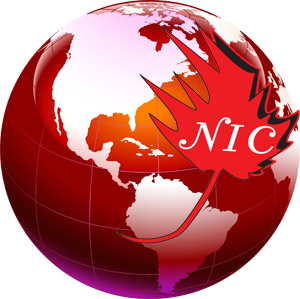Hiring foreign workers and working in Canada under one of Canada’s work permit programs

Hiring foreign workers under work permit programs
My last blog post was an introduction to the work permit programs. It’s a solution to help relieve labour shortages for Canadian employers. According to Statistics Canada labour challenges are impacting Canadian employers, most specifically in the construction, manufacturing, health care and social assistance, accommodations and food services businesses https://www.statcan.gc.ca/en/subjects-start/labour_/labour-shortage-trends-canada. Specific work permit programs are available so employers can hire foreign nationals temporarily or permanently.
Work Permit Programs
With this in mind, let’s elaborate on the topic of the various work permit programs and the LMIA process more in-depth. Most jobs offered to foreign nationals require to go through a process called the Labour Market Impact Assessment (LMIA), before submitting the official work permit application to Immigration, Refugees and Citizenship Canada (IRCC). The LMIA is an analysis of the Canadian labour market as to be sure that no suitable Canadians are available to fill the job before hiring skilled foreign nationals. The employer will need a positive LMIA document before hiring foreign workers.
Seek professional assistance
Employers find the the work permit and LMIA process overwhelming and time consuming. Reasons being, one – normally the job needs to be filled as soon as possible; two – specific steps must be undertaken before submitting the LMIA application for review by Employment and Social Development Canada (ESDC). It is recommended to begin the procedure six months prior to the expected start date of the foreign national. It entails gathering all the information and documents required to support and accompany the LMIA application. They must be according to the ESDC’s particular specifications. As a result, the process must be conducted precisely without muffing it up. For this reason, most employers seek immigration professionals to assist with the work permit and LMIA process.
Advertising with specifications
The most extensive requirement is the advertising process. The employer must advertise the job opportunity for a minimum period of 30 consecutive days within the three months prior to submitting the LMIA application. The employer must publish the ad on three different sites or locations. The recruitment activities could include an online Canadian job search website, a website or magazine dedicated to the respective profession, local or regional newspapers, job fair and so on. One of the advertisements must be on a national scale to reach as many candidates possible. This can be a national newspaper or job search website. At least one of the ads must continue to run until the results of the LMIA application. Before publishing any ads for the purpose of a LMIA it is important to note that specific information must be in the ad. Missing one or some of the criteria may disqualify the advertisement. The employer may need to correct and republish. The information required to be in the advertisement currently includes all of the following. Please note, always review the government’s website and the relevant application guidelines for updated information:
- company operating name and address
- title of the position
- City or town and province of where the work will be performed
- job duties. If applicable, for each position if more than one
- minimum education and work experience required
- terms of employment, specify whether it is temporary or permanent
- specify the language the work will be performed
- wage according to the median wage on Job Bank
- contact information, including telephone number, cell phone number, email address, fax number, or mailing address
The second to last bullet pertains to wages according to the median wage on Job Bank. If you may not know already, the median wage depends on the occupation and the job location. It is not the lowest or the highest wage, it’s ranked in the middle. The employer must absolutely pay the foreign employee no less than the median wage. Wages are determined by both Employment and Social Development Canada and Statistics Canada. Job Bank is Canada’s national employment database that promotes jobs, wages, advice, career, planning etc. https://www.jobbank.gc.ca/home . To assist the employer I find this information for them and review their job advertisement to be sure it meets the appropriate standards before publication. Here is an overview of the LMIA process:
- Submit the job offer to a qualified foreign worker. The job offer can be made at a later stage of the process if a worker is not yet determined;
- Gather relevant documents;
- Advertising according to the LMIA requirements;
- Completing the LIMA application forms with due diligence. Do not omit any information or any supporting documents.
- Submit the completed LMIA application to Employment and Social Development Canada in the online portal.
For more detail or clarity on the work permits and LMIA process seek professional Normandeau Immigration services. We can make the complex process seem effortless.
Ways to work in Canada without going through the LMIA process are with free trade agreements. We discussed the CUSMA agreement in my last blog post more in detail, because I’ve worked with many U.S. Professionals and companies looking to expand their business and transferring employees to Canada.
There are more agreements between Canada and other countries such as Chile, Peru, Columbia, Korea, United Kingdom of Great Britain and Northern Ireland. The General Agreement on Trade in Services (GATS), which is similar to CUSMA. It is offered to intra-company transferees and professionals. Their list of professionals is different to that of the CUSMA agreement. It provides access to individuals who are qualified citizens from the World Trade Organization (WTO) member countries such as all of Europe. The expansion must result in job creation for Canadians. If a new business looking to expand in Canada a well-defined business plan is an important to document in the application.
Other Canadian work permit programs
Provincial work permit programs, each province has their own to attract skilled workers, business people and students to meet their own needs with their respective criteria. An assessment is definitely advantageous to determine a foreign national’s eligibility for one of the provinces’ programs.
The Visa Start Up program is also a great opportunity for immigrant entrepreneurs with creative business ideas. While their application for permanent residence is in process with IRCC, they can apply for a temporary work permit. Having the relevant work permit will allow them to come to Canada and begin establishing their business. The program entails creating a business in Canada based on the program conditions. Language requirements must be met and sufficient funds is required to transfer to Canada to support themselves.
International students bring a lot to Canada’s economy. In addition to the study permit, they be eligible for an open work permit that’s valid as long as their study permit. They can work while studying and their accompany spouse may apply for an open work permit as well. All the while these foreign nationals have the opportunity study in Canada, learn about our culture, visit our country and help relieve our national labour shortage.
What is an open work permit? It is a document that allows foreign individuals work for almost any employer and not one specifically. Open work permits are usually issued to international students, including those who applied for the Post-Graduation Work Permit Program, their spouse, the spouse of a work permit holder who works for a specific employer, such as a skilled worker or one under a trade agreement, youth programs such as the International Experience Canada.
The International Experience Canada program allows youth between the ages of 18 and 35 from eligible countries apply for an open IEC work permit. If a work permit is issued to them, they can live and work in Canada temporarily for 12 to 24 months. Sounds exciting! It is however, there is a quota on the number of works permits issued and a specific window when to apply. If this is of interest to you or someone you know you may want to keep track of when the program opens and prepare in advance to jump on the chance. By the way, there is a program that is also offered to young Canadians wanting to work and live abroad temporarily.
As you can see, there are more ways than one to live and work in Canada. Determining which, program is best for you is determined through an assessment using the individual’s personal information such as age, language proficiency, education, work experience, Canadian experience then comparing it all with some of the programs’ criteria. An experienced Canadian immigration consultant will lead you to the best one and guide you through the process.
Contact us for support
Would you like the possibility of being assessed? Canada feel free to use our free assessment tool that can be found on our website https://normandeauimmigration.ca/free-assessment/ Be sure to enter all your personal information requested. Please share the link with someone who may be interested.
